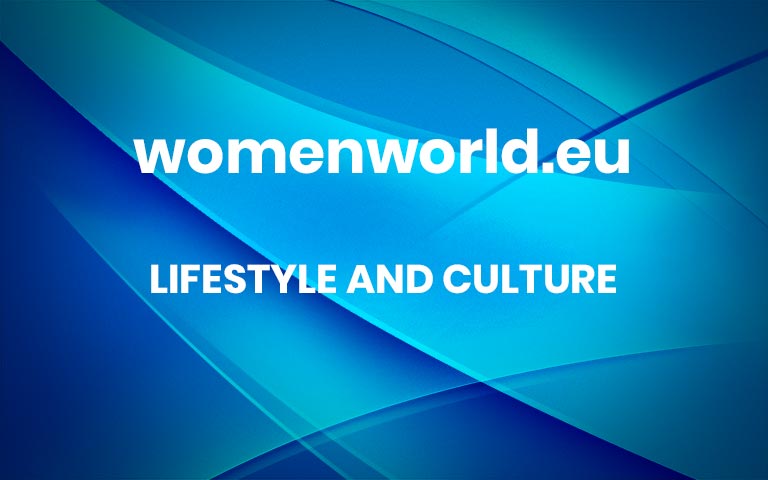HOTTEST

As 2020 comes to a close, many will be reflecting on the year that has been. With all of us having to face some major challenges this year, we’ll have also learned some incredible life lessons from experiences and also inspiring people throughout 2020.
This rings true, particularly for Emirates Woman. We’ve spoken to and championed some incredible women this year and we have learned many valuable philosophies and lessons from their wisdom and inspiration.So, as the year draws to a close, EW is looking back on just some of the inspiring women we championed this year.
Amina MuaddiGracing the cover of EW‘s ‘Go Your Own Way Issue’ in April, designer Amina Muaddi is someone who epitomises individuality and grit to go it your own way. In our exclsuive interview with her, she explained that she laways knew she wanted to be an entreprenuer.
“After working with fashion magazines for a while I realised that I should not put my dreams on hold and I decided to start my first shoe company,” she said. “There is no right time, sometimes things work out sometimes they don’t. But you have to be brave and start, take the first step and then be ready for the adventure.”
Fatma Al OtaibaDesigner Fatma Al Otaiba started this year (and new decade) with a bang, by launching her new luxury brand ODEEM. For the last 10 years Al-Otaiba dreamt of starting her own handbag brand. The Dubai-based luxury label which aims to focus on timeless leather goods. Combining tradition with eclecticism, the designs draw on different textures and details that are sure to turn heads.
This year, Al Otaiba has taught us about many things to do with mindfulness and gratitude, what it takes to be an entreprenuer and her pride for being an Emirati woman.
Ola FarahatOur cover star for May’s – ‘The Mindfulness Issue’, Ola Farahat is a rare combination – educated, beautiful and incredibly down to earth. With 1.2 million followers on social media, Farahat is the perfect exmaple on how to stay mindful and grateful. Despite having been in the social media space for many years, she explains it’s still a “dream”.
“I just pursued my hobby and believed in it,” she told EW. “I appreciated every person who admires me because they made my dreams come true.”
Rania FawazAs the cover star for ‘The Summer Escape Issue’, Rania Fawaz showed us on a 12-hour shoot in 45-degree heat that she is focused, free-spirited and unfailingly hard-working. As she’s built her name in the social media space she told us how there is “no off switch”.
“I think the key to being sane is always to be yourself across all platforms, that way it was not draining and I didn’t feel like I had to have time for myself,” she said. “I feel like the entire day is time for myself because of the way I choose to be.”
Her Highness Sheikha Sana Al MaktoumThis year Her Highness Sheikha Sana Al Maktoum launched her eponymous brand Sana Al Maktoum Fine Jewellery. However, her jewellery brand is so much more than just jewellery, Her Highness is encouraging women to find their inner strength through one treasured piece at a time. Her first collection for Sana Al Maktoum Fine Jewellery entitled ‘My Treasure’ is an ode to her late grandmother, using butterflies as the symbol.
“Butterflies are symbols of transformation and beauty and she grew up at a time when options were limited for women, but she didn’t let that stop her,” Sheikha Sana she told EW in our exclusive interview with her. “She found a way to shine and to help others shine which is why I consider her a treasure.” Sheikha Sana also explained that each piece is “designed to be worn alone or layered together, each creation honours the memory of a remarkable woman and encourages the wearer to embark on a journey to find her own inner treasure”.
Faiza BouguessaFaiza Bouguessa is the brains behind the namesake label Bouguessa. The globally-championed has mastered exactly how the perfect cut inspires confidence. “Bouguessa is made to inspire confidence,” the designer told EW. “The ethos of the brand is all about minimal and sophisticated elegance for the modern woman. We recently announced our wish to move toward more sustainable practices, to allow women to feel good and do good when wearing our designs.”
Her Highness Sheikha Latfiah Al MaktoumGracing the cover of September’s – ‘The Power Issue’, Her Highness Sheikha Latifah Al Maktoum. As a truly powerful and inspirational figure, Her Highness knows exactly how to keep her mind in champion mode.
“I learned I can only control what I can do. I can only control my actions not my surroundings or other people’s actions,” Her Highness said on overcoming challenges. “So why get frustrated by things you cannot control, it will not change anything? You have to make the best of every situation and there is always a light at the end of the tunnel even though sometimes you cannot see it.
Her Excellency Dr Maryam MatarHaving had the dream and desire to serve in the medical field since she was young, Her Excellency Dr Maryam Mohamed Fatima Matar MD, Ph.D has become a pioneer and a visionary in the healthcare space in the UAE.
Not only is Her Excellency a pioneer in the medical space, she is a role model for many women in the UAE seeking to succeed, whether that be in healthcare or other industries. Additionally, she’s able to facilitate change, paving the way for other women and girls in the region. “My role as the Chairperson of UAE GDA and being the most powerful women scientist, gives me huge opportunity to make change and influence decision-makers to bring more learning and career opportunities for girls and women,” she told EW.
Khulood ThaniKhulood Thani, cover star for October’s – ‘The Bravery Issue’, combines her entrepreneurial spirit and extensive experience in culture and design and is focused on bringing innovative global fashion to an international platform. “I always trust my gut feeling, I have a special connection with the universe around me, and I like to follow the messages it reveals to me,” she told us.
Captain SalmaCaptain Salma Al Baloushi is the first Emirati female to rise to First Officer’s rank at Etihad Airways. Earlier this year, Captain Salma spoke to us about what it takes to become a woman of firsts.
“We get our mental obstacles from people around us who try to downgrade and discourage us from going ahead with things they’re not familiar with,” she said of her journey to success. “People kept telling me aviation was not for me, or this field was only meant for men, but my batch mates believed the opposite. It’s exhausting, but with the right support of your family, your company and a good understanding of the work environment, it’s possible.”
Alison LohenisAlison Loehnis, President of Net-A-Porter and Mr Porter is an incredible woman and a true power player. Combining an innate sense of style with one of the sharpest minds in the industry, we previously spoke to her about what it takes to continually stay one step ahead and perpetually innovate in an industry as fast-paced as fashion.
Her Royal Highness Princess LamiaHer Royal Highness Princess Lamia Bint Majid Al Saud has made it her life’s mission to help others, particularly advocating for women. Through her incredible philanthropic work, Her Royal Highness is changing the world, one incredible story at a time. “If you are fortunate enough to have access to resources or a raised platform, it is your responsibility to support and empower those who are not as fortunate,” she told Emirates Woman.
Shaima Saleh Al-HusseiniShaima Saleh Al-Husseini is the managing director for the Saudi Sports for All Federation (SFA) and has been vital in the development of women’s sport in the Kingdom. She was right at the forefront when the Saudi Greens Team, which became the first Saudi women’s team ever to join an international event. In 2019, the Greens competed in the Global Goals World Cup (GGWCup) – a tournament that was launched to champion the role of sport in achieving the United Nation’s Sustainable Development Goal (SGD) No. 5.
Al-Husseini is incredibly proud of the change that’s happened in the Kingdom, and she only hopes this continues, she told EW earlier this year. “I hope to see more Saudi women become the faces of sport in Saudi,” she told EW recently. “Already we have a few very well-known professional athletes and some fitness professionals that are very well-known at the community level as well.”
Her Highness Sheikha Mozah Al MaktoumOur cover star of November’s – ‘The Fine Jewellery Issue’, Her Highness Sheikha Mozah Al Maktoum is inspiring the new generaton of incredible women having risen to great heights in the aviation industry. “I’m most proud of becoming the first Emirati woman to join the Dubai Police as a helicopter Pilot,” she told us of her proudest moment. “Serving my country by doing what I love doing most is simply the best feeling, and I am deeply grateful for it.”
Ghizlan GuenezGhizlan Guenez has grit. Not only for launching The Modist, but for having the courage to let go. No successful entrepreneur starts a business without thinking it could fail, but Guenez does not see the closing of The Modist as a failure. In its short digital life, it has transformed the wardrobes of women around the world and enriched Guenez with newfound courage to take on the next challenge.
Alex Hirschi, Supercar BlondieGiving up a successful career to follow her passion for supercars, Alex Hirschi, also known as @supercarblondie, gave us some insight about leaving your comfort zone for the dream earlier this year.
Salama MohamedA journey to finding self-love can be a long and winding road, which is something UAE-based content creator Salama Mohamed knows all too well. Earlier this year, she opened up to us about why she is “blessed with vitiligo”. Vitiligo is a skin condition Salama was diagnosed with since she was five. It’s a disease that causes the loss of skin colour in patches, which can get bigger over time. While she has learned to love her condition, she opene up about the long struggle to find a place of self-love and acceptance.
Nisreen ShocairNisreen Shocair, CEO YNAP Middle East is responsible for driving and developing the next phase of YOOX NET-A-PORTER GROUP’s ambitious strategy for the region. Back in September, EW spoke to Shocair about localisation, personalisation and connecting with the discerning, tech-savvy, luxury customer.
Areej Al HammadiMaking history as a Guinness World Record Holder for the most football ‘hotstepping’ in one minute, Emirati footballer Areej Al Hamadi discussed with us her brave steps towards normalizing women playing football in the region.
Haya JarrarClosing out an incredible year for 2020, designer Haya Jarrar graced the cover for December’s – ‘The Party Issue’. The founder and creative director of Romani discussed with us what brought her to launching her own brand. “There’s never really the ‘right time’,” she explained. “It’s always been my dream to start my own label, so I just went for it. Studying fashion design in university and working in the industry after graduating helped me gain experience and insight which I used to start my own brand with my own identity.”
To everyone we featured this year, thank you for an incredible 2020. We look forward to another amazing year in 2021.
– For more on luxury lifestyle, news, fashion and beauty follow Emirates Woman on Facebook and Instagram
Images: Supplied More
Life
by Sarah Joseph
12 mins ago2024 is all about amping up your fitness routine and what better way to start than with a spin class.
By combining the best of both worlds, everyone can escape for 45 minutes with challenges for all level, for each participant to move at their own pace.
So to begin, Emirates Woman has curated a guide of the best studios that offer spinning to take your fitness regime to the next level.
1RebelSituated behind the Arts Club, 1Rebel is an 11,600 square feet gym space with high-powered equipment including stationary spinning bikes for an intense body workout. With curated playlists and state-of—the-art equipment, you can burn up to 800 calories per class. One session is priced at Dhs130 and it’s located at ICD Brookfield, this place is must-visit.
For more information visit 1.Rebel.com
CRANK Fitness StudioFor those who require a high-energy workout, spinning at Crank is nothing short of that with its adrenaline-fueled music. Each class is conducted by highly trained professional, who brings their expertise to the table. This fitness boutique also offers an exclusive smoothie section for visitors to have the entire experience from start to finish. The first trial session is priced at Dhs60, with its location in Unit 43, Alserkal Avenue.
For more information visit crank-fit.com
PlatformSurrender to our coaches as they set the pace in our state-of-the-art studio and take you through a 45-minute dance party on the bike. Our cycle classes are designed to be an experience to help you check out from your responsibilities of the day and achieve some me time. One session is priced at Dhs142.80 and it has locations around Dubai Marina, DIFC, Dubai Hills and Eden House.
@theplatformstudios
FitnGlamAmp up your cardio fitness level with the ultimate indoor cycling experience. Surrender to rockstar instructors as they set the pace in the state-of-the-art studios with Stages bikes. These technologically advanced indoor bikes, set your success in motion with one of the smoothest, smartest and strongest rides of your life. This UAE’s premium women-only club promises a stronger environment for everyone to grow. For membership packages, contact FitnGlam. The studios are located across Al Ghurair Warehouses, Al Quoz, Sports Society Complex Mirdif and Dubai Hills Mall.
For more information visit fitnglam.ae
Boxica
This studio offers a range of different ride classes for those wanting a quick endorphin rush any time of the day. 30-50 minute sessions of intense cycling on their state-of-the-art equipment helps clients track progress through RPM and watts expended. Of course, no ride class is complete without an epic soundtrack, and Boxica pairs their classes with heart-pumping beats to keep gym-goers working hard through the end of the session. For membership packages, contact Boxica. The studio is located at The Hive Building, Studio City.
@boxica
January’s – The Alignment Issue with FitnGlam – Download Now
– For more on luxury lifestyle, news, fashion and beauty follow Emirates Woman on Facebook and Instagram
Images: Supplied & Feature Image: Unsplash @josh-nuttall More
After a season of footwear being restricted to the exclusively practical, looking ahead to the year’s shoe trends feels like a mirage in a sea of black, salt-stained, boring boots (even though Punxsutawney Phil did promise us an early spring). Winter is the opposite of the crème de la crème—the worst of the worst?— when it comes […] More

Your ultimate weekend guide in the UAE – September 28 to October 1, 2023.
Embark on a culinary expeditionVisit Dubai’s latest gastronomic destination, The Citronelle Club, located at SO/ Uptown Dubai. he Citronelle Club boasts a character of exquisite blend of Asian culinary traditions, intertwined with French flair to create a bold epicurean heritage that has evolved into its distinct identity. It weaves Asian symbolism, including koi fish and dragons, into an evocative narrative, cleverly concealed within its unassuming abstract canvas. Every aspect of the menu and the dining experience has been carefully crafted to foster connection, conversation, and an unforgettable culinary journey. Located at SO/ Uptown Dubai, this restaurant has an overall distinct identity.
For more information visit sevenrooms.com
Soak up the sunSituated on the vibrant beachfront of Jumeirah Beach Hotel, Nuska Beach is back this season. Soak up the Golden sun as you sip on endless glasses of rosé, overlooking picturesque oceanfront views and set to the soundtrack of vibrant tunes from the resident DJ and Saxophonist. Enjoy unlimited wine and a delectable three-course lunch menu for Dhs295 per person starting from Sunday October 1, 2023, every Sunday to Friday from 12:30pm to 4pm.
For more information visit Jumeirah.com
Try a new menuThis September, Armani/Ristorante, the Michelin-starred jewel nestled within the opulent confines of Armani Hotel Dubai, proudly presents its highly anticipated seasonal mushroom and Truffle menu. This exceptional menu transforms seasonal mushrooms into extraordinary dishes, showcasing an array of inventive delicacies like Pioppini, Trombetta, Porcini, Risotto, and Finferli. Conclude your epicurean journey with the tempting Choccolato dessert, featuring Dulcey chocolate bavaroise and porcini ice cream. Priced at Dhs649, this exceptional culinary experience invites guests to indulge in an array of sophisticated flavours until Saturday, September 30, 2023.
For more information visit armanihotels.com
Experience Tokyo’s nightlifeFor one of Dubai’s best kept secret visit Ongaku situated at CLAP, DIFC, hidden behind a discreet red door inside the restaurant. With captivating views and a vibrant atmosphere, guests can enjoy the finest music in an indoor area to keep cool all summer and take in the magnificent views of the Dubai skyline. This late-night hangout will feature an entertaining program of DJs and live performers all night-long.
For more information visit claprestaurant.com
Book a short-haul getawayIn celebration of The First Collection JVC’s second anniversary, the hotel has unveiled a special promotion available until 30 September 2023. During this period, guests can savour a generous 35 percent discount on their accommodations, complemented by an extra 20 percent off on dining and indulgent spa treatments with privileged access to Soluna Beach Club on The Palm Jumeirah, a 20 percent discount on a variety of water sports, complimentary transfers to Mall of the Emirates and the nearest metro station, as well as 20 percent savings on spa and laundry services. Additionally, early check-in and late check-out will be granted based on availability. Moreover, guests can optimise their stay with the exclusive ‘Stay Better’ package, starting from Dhs169 per room per night, ensuring the perfect getaway for the long weekend.
Go on a chilling adventureFor Resync’s third anniversary, visitors and friends can experience the incredible world of Whole Body Cryotherapy for just Dhs300, with a total of three people at the studio’s state-of-the-art Whole Body chamber which takes everyone on an exhilarating three-minute journey into the benefits of extreme cold therapy reaching temperatures of -110°C. As the best way to strengthen team bonds, guests can explore Resync’s latest offerings including Red Light Therapy. The birthday challenge is available until Sunday, October 15, 2023. Located at Central Park Towers, DIFC, this venue is must-visit.
For more information visit resync.ae
Visit a quaint café
If you’re on the lookout for Dubai’s best kept secrets, you’re in the right place. With a host of cultural enclaves, this emirate has a myriad of hidden coffee shops and cafés waiting to be discovered. Infused with boho-chic elements, each café is a zen-inspired oasis for guests to unplug and reset during the weekend or weekend. Be it a conscious eatery or a hidden villa in the heart of Jumeirah, Dubai is never short of aesthetic gems where you can work from or simply catch up with friends. For a complete guide on the unique hidden cafés in Dubai, swipe through our editor-approved guide.
Indulge in this exquisite tasting menuLead by well renowned Indian Chef Ritu Dalmia, Atrangi’s culinary offerings shine a spotlight on lesser-known regional Indian delicacies, infusing the vibrant venue with the comforting essence of homemade cooking. With a varied menu that caters to a diverse range of palates, Atrangi offers a personalised solution for those seeking the ultimate culinary experience. To experience the key dishes, Diners can choose between two options for the tasting menu. The five-course tasting menu is priced at Dhs440 or an indulgent seven course experience priced at Dhs640. The seven-course menu is inclusive of a delectable amuse bouche and palate cleanser, heightening the dining experience and allowing each signature plate to create a harmony of flavours with each bite. It’s available from 6pm to 12am and is located in the prestigious Jumeirah Al Qasr Hotel.
For more information atrangidubai.com
Celebrate International Coffee DayIt’s time to celebrate one of the most globally beloved beverage! With International Coffee Day soon approaching on October 1, 2023, the UAE has a host of exciting offers brewing to celebrate the occasion. As one of the most widely consumed beverages internationally, it’s time to raise awareness of its global impact. From complimentary coffees to exclusive barista-inspired workshops, there are plenty of opportunities for coffee connoisseurs to make the most of this day in the emirate. If you’re in need of ideas on where to visit, swipe through our guide of all the best coffee deals to relish in Dubai.
Savour a royal breakfast spreadFor a lavish spread of carefully curated dishes, Gastronomy at Atlantis The Royal has set a new standard in culinary excellence. Officially launched on September 28, 2023, guests can embark on an unrivalled journey through global cuisine with its daily breakfast and new dinner service with 17 live cooking stations, four bars and an enticing array of over 100 delectable dishes, Gastronomy, Dubai’s newest gourmet dining hall, will take diners on a culinary journey like no other. From beloved Western classics to exotic Southeast Asian delicacies and mouthwatering Arabic fare, this extraordinary dining destination caters to diverse palates. Guests will be able to enjoy breakfast at Dhs235 per person.
For more information visit atlantistheroyal.com
Unleash your creative juicesWant to test your artistic skills or simply try an exciting, we’re here to help. From stimulating discussions on though-provoking subjects to art galleries showcasing the world of notable artists, Dubai is never short of venues to feel rejuvenated. Whether you’re an art fanatic or enjoy taking part in various workshops, there’s enough and more to ensure, your skills are used and you can learn from the experts to simply take a break from your phone. So, to revamp your daily routine, here are the editor-approved creative spots to visit with exclusive programmes this month.
Pamper yourselfCaesars Palace Dubai is running the ultimate relaxing daycation offer until this Saturday. Book a 60-minute full body massage or facial treatment at Que Spa and get complimentary access to the resort’s stunning Neptune Pool and beach, which features unobstructed views of the Arabian Gulf. The treatments include the Nourishing, Brightening, Purifying or Gentleman’s Facials, alternatively choose to indulge in a Qua Spa Swedish, Aromatherapy, Deep Tissue or Hot Stone Massage. Priced at Dhs620, it’s located at Palace Tower, Caesars Palace, Bluewaters.
For more information visit caesars.com/
Try this new Italian tasting menuPriced at Dhs345, Fi’lia’s tasting menu consists of an exquisite compilation of Italian delights, evoking a special memory, allowing guests to immerse themselves in an unforgettable dining experience in a single sitting, savouring new taste combinations, and discovering Chef Célia’s creativity and artistry. Guests can savour a host of dishes such as Zuppa Fredda, a cold Italian soup, truffle-infused beef carpaccio, Agnolotti, filled with tender confit duck legs, the Olive oil sorbet offers a refreshing and unique twist on a classic treat and more to enjoy and exceptional dining experience. It takes place from 6:30pm to 10:30pm and available throughout the week, it’s located SLS Hotel & Residences.
Indulge in this new beauty haven in Abu DhabiLocated at Bloomingdale’s in the newly opened Reem Mall on Reem Island, Abu Dhabi this first-ever global beauty store is a one-stop shop offering an unparalleled luxury experience. From international to niche, the luxury department store brand boasts an array of products, technology and bespoke services from brands such as CHANEL, Dior, Estee Lauder, Ex Nihilo and more. There are two lavish beauty rooms which includes a dedicated La Prairie haven for indulgent treatments. The tech-led beauty destination features a cutting-edge in-store product displays and experience including Magic Mirrors which brings to life the latest shades and styles, without lifting a finger.
– For more on luxury lifestyle, news, fashion and beauty follow Emirates Woman on Facebook and Instagram
Images: Supplied & Feature Image: Instagram @Zozoewitherspoon More
While Dubai reopened its borders to tourists back in July, and many European countries have been welcoming visitors throughout summer, Oman has firmly remained its borders shut to international flights since March due to the COVID-19 pandemic.
However, it an announcement made by the country’s’ Supreme Committee, international inbound and outbound flights into the sultanate will resume from October 1.In a statement issued by the committee, they encouraged passengers to comply with prevention measures in place in order to contain the virus.
#OmanAir is pleased to announce that scheduled international service will return on 1 October. We will continue to work closely with authorities and experts to ensure your safety and well-being at every stage of your journey. We look forward to welcoming you on board. pic.twitter.com/4IH9fv1qXW
— Oman Air (@omanair) September 7, 2020Oman Air also issued a statement stating the airline was pleased to confirm the resumption of flights into the country.
“We will continue to work closely with authorities and experts to ensure your safety and well-being at every stage of your journey,” the airline said. “We look forward to welcoming you on board.”
We’re sure more details will follow about potential quarantine restrictions, testing requirements and more.
– For more about Dubai’s lifestyle, news and fashion scene follow Emirates Woman on Facebook and Instagram
Feature Image: Six Senses Zighy Bay More







